
 | SOCO Blog |
07 January 2016
NEBULAS IN HYDROGEN-ALPHA
If you have recently accessed my Image Gallery you'll note that it includes a number of bright emission nebulas, often associated with embeded young open clusters, scattered across the northern Winter sky. My "true-color" images show these objects glowing in an intense, deep red. This color is, of course, the result of the physics going on in this piece of space. Emission nebulas (also called "HII Regions") are large clouds of predominantly hydrogen gas (hydrogen is the most abundant element in the Universe) associated with young star clusters— the stars in the cluster condensed from the cloud of hydrogen gas. Now that these young stars (often extremely hot blue-white giants) have begun to shine, a lot of their electro-magnetic emissions (light) is in the ultraviolet (UV) wavelengths. Normal hydrogen atoms contain one electron orbiting the nucleus. This electron can have various energy states, which correspond to orbits at different distances from the nucleus (as in the Bohr Model of the atom). The electron can absorb energy, as by absorbing a photon of UV light, and move to a higher energy level. When the electron falls to a lower energy level, it will emit a photon of light. The wavelength of this emitted light will depend on the nature of the transition in energy states— which energy level the electron started in and which energy level it fell to. Since the energy levels are discrete, there will be a specific wavelength associated with each transition.
Physicists have identified several series of electron transitions occurring in hydrogen. Perhaps the best-known is the Lyman Series. These transitions are all associated with very short wavelengths in the UV range. Of more interest to astronomers working in the visible wavelengths is the Balmer Series of transitions. In this series, the first four transitions are associated with wavelengths in the visible spectrum. These four wavelengths are 656.3 nm (deep red), 486.1 nm (light blue), 434.0 nm (dark blue), and 410.2 nm (violet), and are commonly identified by Greek letters— Hα, Hβ, Hγ, and Hδ (in the order of long to short wavelength). Hα emissions dominate in emission nebulas, giving the nebulas their deep red color (as in my images). In some cases, there may be a substantial amount of Hβ emissions. In this case, the mixture of deep red and light blue light gives the nebula a bright pink ("electric pink") color (although portions of an emission nebula close to the cluster stars can also appear pink from starlight reflected by dust in the nebula, i.e., mixing red Hα light and bluish-white starlight also gives pink).
Recognizing the presence of these specific wavelengths in emission nebulas, astro-imagers like myself use filters to capture images in these specific wavelengths. These "narrow-band" images can be combined with regular broad-band Red, Green and Blue (RGB) images to create true-color images that enhance the appearance of the nebula. While these color images show the true beauty of these objects, it is often easier to see the detail in an emission nebula by looking at the Hα image alone. I think this is because it seems easier to pick out the contrast between different parts of the nebula in the monochrome Hα version of the nebula. With this in mind, I present the Hα versions of some of my recently imaged emission nebulas in this blog entry along with their true-color renditions so we can study the structure of these objects. While you've viewing these images, keep in mind that the monochrome Hα images are not just grayscale versions of the color images— they are images acquired in a single wavelength of light (656.3 nm), excluding all other wavelengths. The fact that the nebulas in the color versions look like the nebulas in the Hα images is proof that these emission nebulas glow with this singular type of light.
The first object (Figure 1) is NGC 7380, the "Wizard Nebula" in the constellation Cepheus. While some of the structure of the nebula is hinted at in the true-color image, it can be better seen in the higher-contrast Hα version. In particular, the central portion can be seen to contain a series of curtain- and pillar-like structures reaching up into the heart of the nebula. An enlarged version of this portion of the nebula is presented in Figure 2. This shows a number of pillar-like structures (often called "elephant trunks") that resemble the "Pillars of Creation" structures known from the Eagle Nebula (M 16) in Sagittarius. These pillar-like structures are formed by the erosion of clouds of dust and gas by the strong stellar winds from the newly formed stars within the nebula in a process called "photoevaporation". In some places, denser formations of dust shield the gas behind them from the stellar winds, resulting in the pillar-like formations. These regions of denser dust and gas at the leading edges of the pillars (called "Evaporating Gaseous Globules" or EGGs) are often stellar nurseries containing proto-star development. So, metaphorically, these structures really are "eggs" from which new stars "hatch".

Figure 1. The Wizard Nebula (NGC 7380) shown as (left) a true-color hybrid RGB image, and (right) a monochrome Hα image.
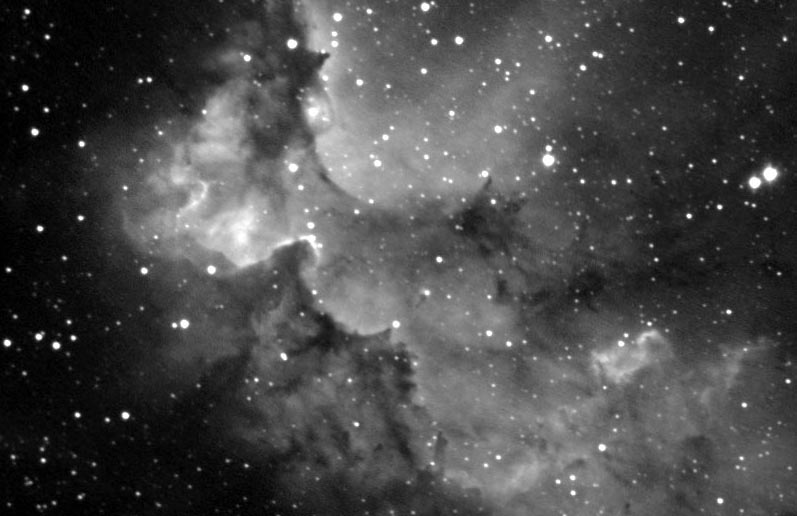
Figure 2. Detail of the central portion of NGC 7380 in Hα showing pillars similar to those in M 16, the Eagle Nebula.
Figure 3 shows Cederblad 214 (Sharpless 171), a large nebular region located along the northern edge of the Milky Way stream in the constellation Cassiopeia. This nebula also exhibits pillar-like structures, as shown in the enlarged portion (Figure 4) of the Hα image centered on the upper portion of the nebula. Here, a pair of pillars, one relatively large and the other relatively small, rise above the face of the nebula in a "Pillars of Creation"-like style. The tops of the pillars (the EGGs) are illuminated by nearby stars— I wonder if it might be the relatively bright star to the lower left of the pillars in Figure 4 (I'll have to see if I can find some distance data for that star). Another interesting feature of this nebula (which is present to greater or lesser degrees with other emission nebulas) is the group of dark nebulas that appear to drift across the face of the nebula like clouds on a rainy day. In fact, the upper and lower edges of the visible nebula are delineated by the presence of large dark nebulas. This brings up an interesting fact— that the "shapes" of many emission nebulas are determined less by the size and shape of the hydrogen cloud making up the HII Region but more by the presence of dark, obscurring dust clouds located between us and the emission nebula. These dark nebulas are very effective in blocking the light from the emission nebula, even though they may contain only a few dust grains per cubic meter. Even here, space is pretty much empty.
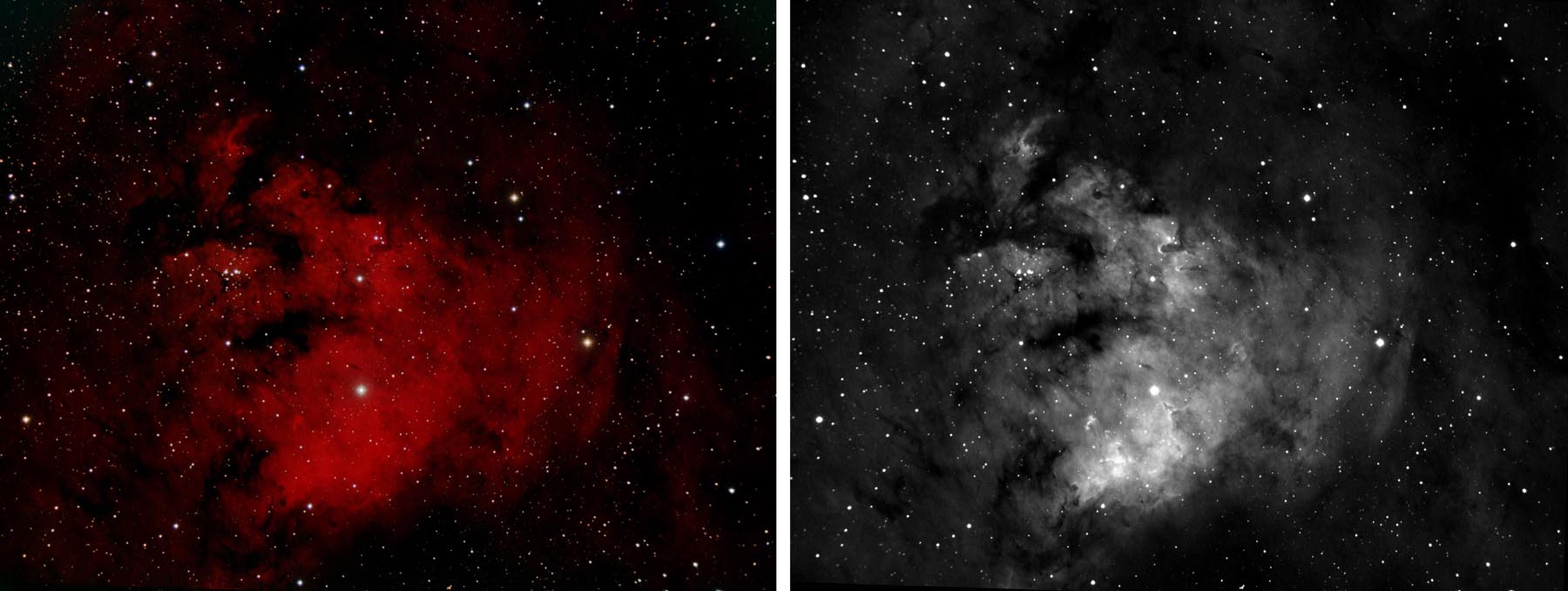
Figure 3. Cederblad 214 shown as (left) a true-color hybrid RGB image, and (right) a monochrome Hα image.
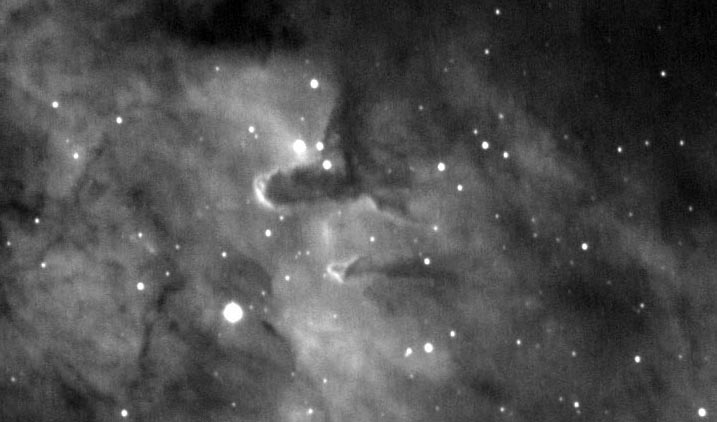
Figure 4. Detail of the upper portion of Cederblad 214 in Hα showing pillars like those in Figure 2.
Figure 5 shows the Cave Nebula (Sharpless 155), located in the constellation Cepheus. It is pretty obvious where its name comes from— the large dark portion along the right side of the nebula looks like the opening to a cave. However, from my images of the nebula, I might suggest another name— the "Roaring Lion Nebula". In my view, the "cave" is the lion's open mouth (sort of with the hint of a tongue near the bottom), while the golden yellow star near the center of the image is his eye. Here again, dark nebulas sculpt the shape we see. There might be some question as to whether the dark "cave" (or "mouth") structure is really a hollowed-out region in the emission nebula (which it looks like), or is an intervening dark nebula. If we look closely at the relatively bright portion of the nebula to the left of the "cave", we see a multitude of tiny stars scattered across its face. We see only a few tiny stars within the region of the dark "cave". Thus, I think we can conclude that the "cave" or "mouth" is actually a dark nebula lying in front of the emission nebula.

Figure 5. The Cave Nebula (Sharpless 155) shown as (left) a true-color hybrid RGB image, and (right) a monochrome Hα image.
Figure 6 shows Sharpless 132, an emission nebula and associated star cluster in the constellation Cepheus. This nebula has several large dark nebulas along its right side, the topmost looking (to me) like a big bug crawling across the face of the nebula. The left side of the nebula exhibits a variety of structures. As shown in the enlargement of this region in Figure 7, a large pillar (upside-down in my image) appears near the upper right corner with its edges brightly illuminated. In the lower left corner, the stellar winds have sculpted a small dark nebula into a laticework of sinuous shapes. And along the upper edge of the image, a dark "cometary globule" (CG) can be seen— these objects are what is left when the stellar wind has pretty much blown away the pillar under its EGG. In CGs, the EGG may be fragmented by the stellar wind, and a "tail" of dust and gas (reminiscent of a comet) streams away from the EGG with the stellar wind.
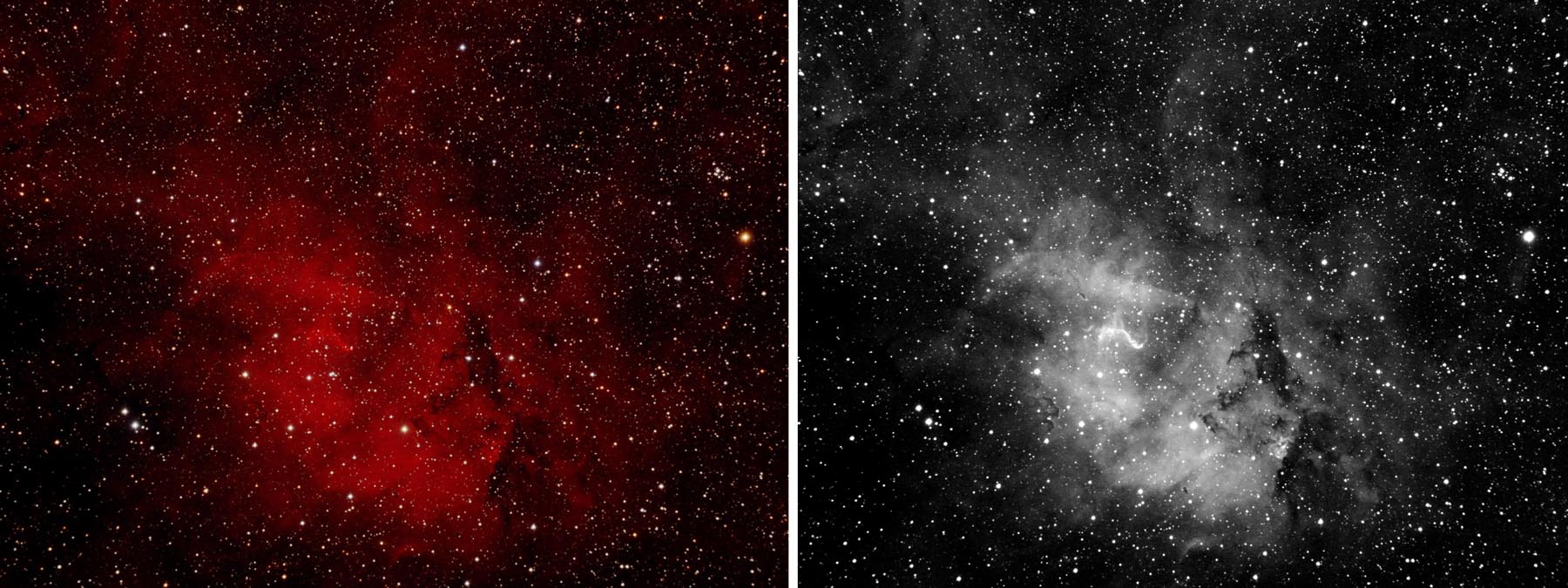
Figure 6. Sharpless 132 shown as (left) a true-color hybrid RGB image, and (right) a monochrome Hα image.
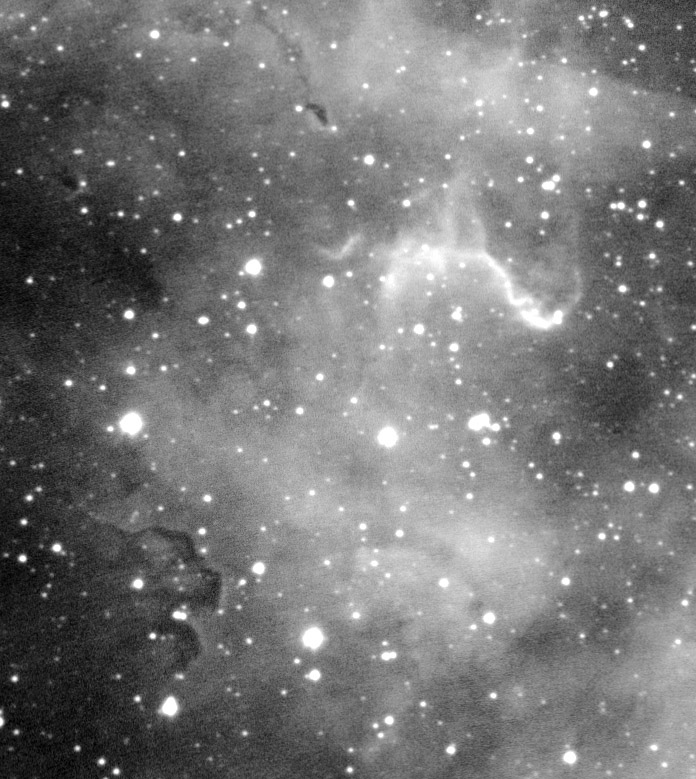
Figure 7. Detail of the left portion of Sharpless 132 in Hα showing a large pillar, sinuous dark nebulas, and a cometary globule.
The last object is NGC 1893, an emission nebula and embedded star cluster in the constellation Auriga. As shown in Figure 8, several smallish dark nebulas float across the face of the emission nebula, giving the impression that the nebula has been pierced with holes. To me, however, the really interesting feature of this nebula is the pair of large CGs located along the lower left portion of the nebula. I've elsewhere commented that these objects look like a pair of snakes slithering across the face of the nebula (the right one even has a pair of stellar "eyes"). Figure 9 shows these two objects in detail in Hα. The "heads" of the objects still look like the tops of pillars, but the rest of the pillars have been erdoded away into tail-like streamers. It's interesting that the two tails both make a "turn to the left" at the same distance below their EGGs. This probably indicates that the direction of the prevailing stellar wind changed at some time in the past.
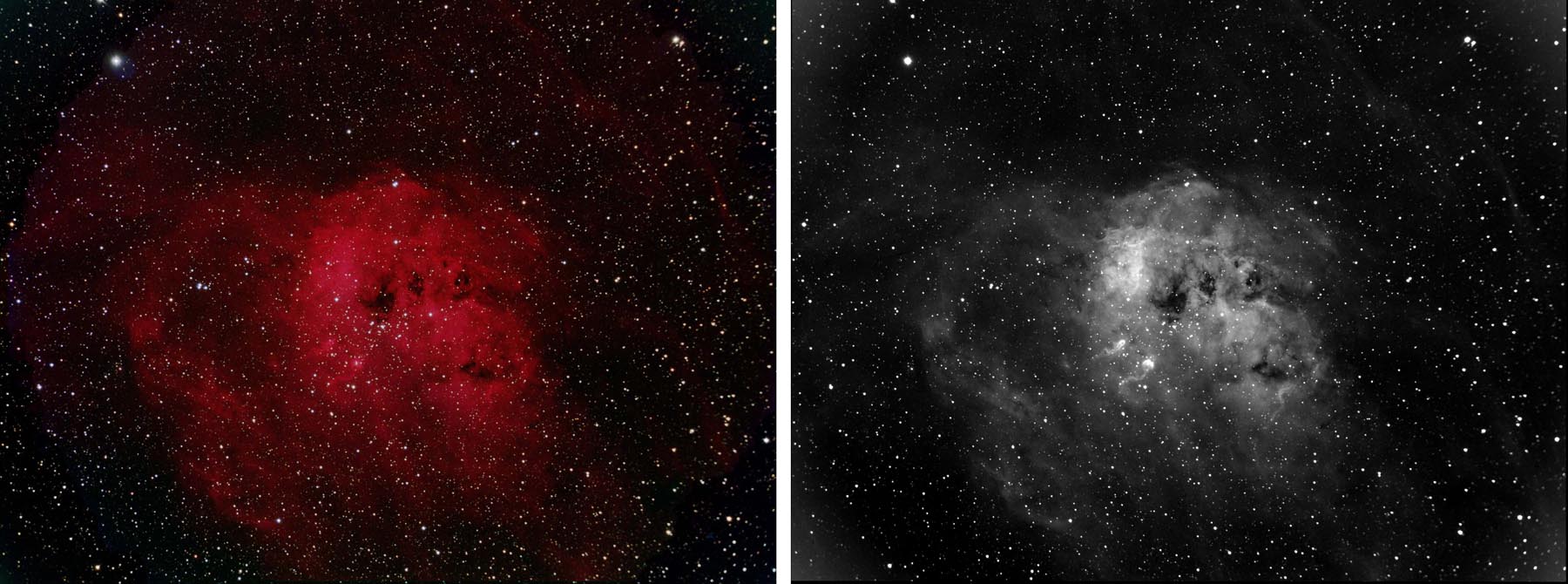
Figure 8. NGC 1893 shown as (left) a true-color hybrid RGB image, and (right) a monochrome Hα image.
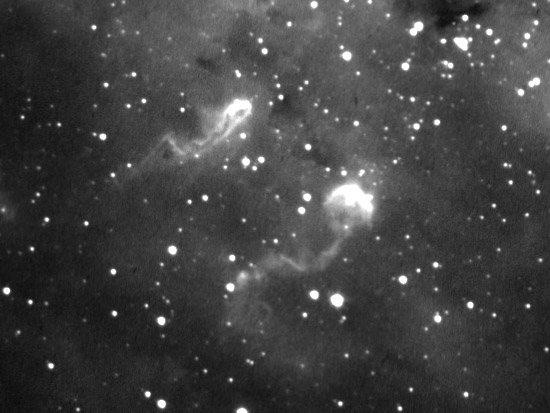
Figure 9. Detail of NGC 1893 in Hα showing the two large, snake-like cometary globules.
The feaurures visible in the Hα versions of astro-imagery can tell us a lot about the dynamics of star formation within emission nebulas. Emission nebulas are the birthplace of stars, and all the stars in our galaxy (including our Sun) originated over the millenia among the gas and dust clouds of these objects. These glowing mists are things of great beauty but, more than this, they provide the starry lights that illuminate the dark vault of our night sky.
 Return to SOCO Blog Page
Return to SOCO Blog Page
 Return to SOCO Main Page
Return to SOCO Main Page
Questions or comments? Email SOCO@cat-star.org